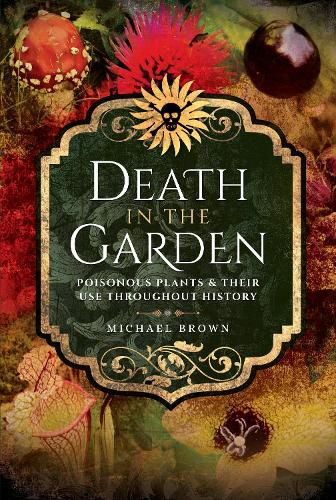Readings Newsletter
Become a Readings Member to make your shopping experience even easier.
Sign in or sign up for free!
You’re not far away from qualifying for FREE standard shipping within Australia
You’ve qualified for FREE standard shipping within Australia
The cart is loading…






Mankind has always had a morbid fascination with poisonous plants; how their poisonous properties were discovered and developed will most likely be left unknown. Over the centuries poisonous plants have been used to remove garden pests, unwanted rivals and deceitful partners. They have also been used for their medicinal qualities, as rather dangerous cosmetics, even to help seduce a lover when perceived as an aphrodisiac. Some of these and other uses originate in a medieval book that has not yet been translated into English. Shamans and priests used these plants for their magical attributes, as a means to foretell the future or to commune with the gods. Discover how a pot of Basil helped to conceal a savage murder. Learn the truth about the mysterious mandrake, a real plant although many do not realise it. Jane Austen wrote a conundrum to entertain her family; the answer is one of the plants in the book. Will you be able to solve the mystery? ‘Death In The Garden’ is based on Michael Brown s most popular talk, popular as this subject holds a strange interest, for many will enjoy learning about these treacherous and peculiar plants, their defensive and deadly traits, as well as the folklore that has grown around them. This title will appeal to gardeners, horticulturalists, nature enthusiasts and anyone who holds an interest in this strange and enchanting corner of the garden. But be warned, many of these deathly plants may already be taking root in your very own garden. AUTHOR: Michael J. Brown has an MA in Garden History and has been interested in both history and gardening for as long as he can remember. As a child Michael was allowed to have a patch of ground to grow whatever I liked, including his first poisonous plants. His mother called the plants, Weeds . He called them wild flowers. Michael has been a Head Gardener, a college lecturer and designed the medieval gardens at the Prebendal Manor, Nassington, including poisonous plants. He now gives talks and demonstrations on historical gardening. 60 colour illustrations
$9.00 standard shipping within Australia
FREE standard shipping within Australia for orders over $100.00
Express & International shipping calculated at checkout
Mankind has always had a morbid fascination with poisonous plants; how their poisonous properties were discovered and developed will most likely be left unknown. Over the centuries poisonous plants have been used to remove garden pests, unwanted rivals and deceitful partners. They have also been used for their medicinal qualities, as rather dangerous cosmetics, even to help seduce a lover when perceived as an aphrodisiac. Some of these and other uses originate in a medieval book that has not yet been translated into English. Shamans and priests used these plants for their magical attributes, as a means to foretell the future or to commune with the gods. Discover how a pot of Basil helped to conceal a savage murder. Learn the truth about the mysterious mandrake, a real plant although many do not realise it. Jane Austen wrote a conundrum to entertain her family; the answer is one of the plants in the book. Will you be able to solve the mystery? ‘Death In The Garden’ is based on Michael Brown s most popular talk, popular as this subject holds a strange interest, for many will enjoy learning about these treacherous and peculiar plants, their defensive and deadly traits, as well as the folklore that has grown around them. This title will appeal to gardeners, horticulturalists, nature enthusiasts and anyone who holds an interest in this strange and enchanting corner of the garden. But be warned, many of these deathly plants may already be taking root in your very own garden. AUTHOR: Michael J. Brown has an MA in Garden History and has been interested in both history and gardening for as long as he can remember. As a child Michael was allowed to have a patch of ground to grow whatever I liked, including his first poisonous plants. His mother called the plants, Weeds . He called them wild flowers. Michael has been a Head Gardener, a college lecturer and designed the medieval gardens at the Prebendal Manor, Nassington, including poisonous plants. He now gives talks and demonstrations on historical gardening. 60 colour illustrations